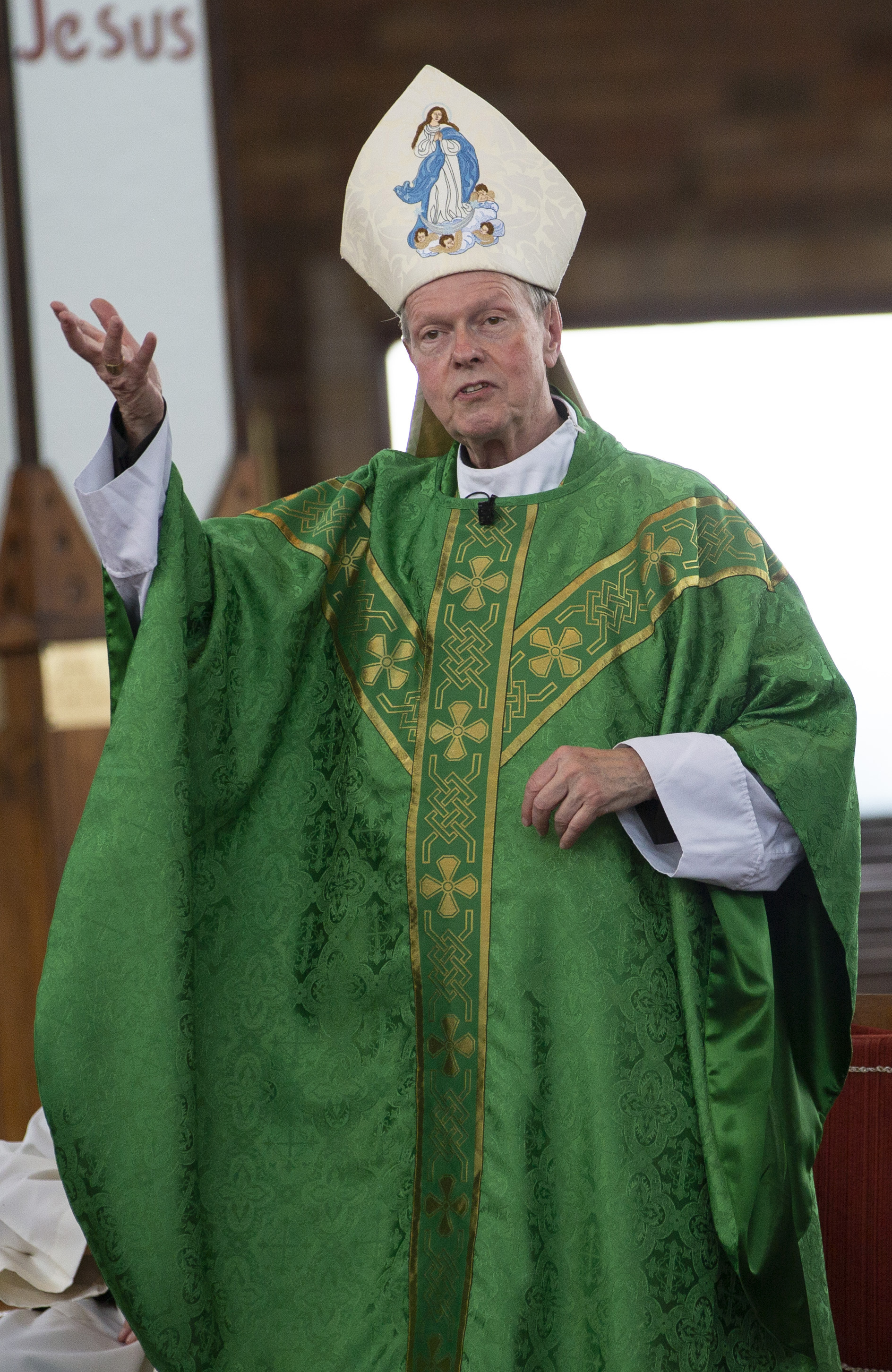April 6, 2018 at 1:53 p.m.
APPRENTICES
Carvers continue Cathedral renewal
At Madison and Eagle Streets in Albany, the bang of hammers and hum of saws mingle with traffic noise as men and women continue to renovate the Cathedral of the Immaculate Conception.
At the back of the building, some less obvious but equally important activity is going on in the stone shop. Long windows along side of the shop allow the public to watch four men intent in their work: cutting stone with a hammer and chisel, wetting and brushing recent cuts, and measuring tracings on the blocks.
They are stonecutter apprentices who are learning a trade that is thousands of years old.
Learning the ropes
Ross Graves, the youngest at 17, hails from Oxford, England. He wants to learn his father's trade of stone masonry and cutting. The others are from the U.S.: Jason Muscanell of Burnt Hills; Robert Pearo of West Eaton, a small town near Syracuse; and Ethan Buck from Schenectady. Guiding them is Stephen Boyle, also from England.
Dave Graves, the renovation project superintendent (and Ross's father), said that "Steve is teaching these apprentices the craft of stone-cutting the same way he was taught years ago in England -- the 'old-fashioned' way.
"They are learning how to use a hammer and chisel, to cut and shape the stone by hand. This is the same way that stone-cutters have been cutting stone for hundreds of years throughout Europe. It is a rare opportunity for these young men to learn the ancient craft the way it has been taught for centuries."
Opportunity
Ross Graves is happy to have such a break so early in his career. "I would not have had this opportunity in England. That's why I am here," he said.
Mr. Pearo, who is in his fourth year of apprenticeship, expects to become a journeyman within a few months. He has previously worked with the restoration of stone, as he is doing at the Cathedral.
"This opportunity is really a good one for me," he told The Evangelist. "First of all, it's rare to learn stone-cutting. I want to know how to cut stone as skillfully as I can, so I applied for the apprenticeship."
Mr. Muscanell decided early on that it was the brickwork he wanted to do. "I started out in the construction business and at one point began working with stone," he explained. "I decided I really enjoyed it. I really like the sound of cutting the stone."
Chosen ones
Phil Galka, the restoration projects manager, said that the apprentices were chosen by the union on their merit and personal achievement.
"They are all very good apprentices," he said. "They want to be here. That's what makes this project so unique really: Everyone that is working here wants to be doing this job."
(The men are at varying stages of apprenticeship, which traditionally takes four years to complete. Their level is gauged by actual hours worked, with each learning at his own pace. The next skill level is journeyman. Some workers remain journeymen for their entire careers, while others go on to become masons. The highest level -- master mason -- is reached by only a small number of workers.)
(6/26/03) [[In-content Ad]]
MORE NEWS STORIES
- Doctor of the church, Hiroshima & Nagasaki anniversary, Ireland pilgrimage | Week in Review
- Washington Roundup: Senior US officials visit Gaza amid hunger crisis, Trump announces new tariffs
- Generative AI poses new threats of child sexual abuse, experts say
- Exiled Nicaraguan bishop says award recognizes ‘tireless struggle’ for justice in homeland
- Dialogue, 2-state solution must end long-running Israeli-Palestinian conflict, Vatican tells UN
- For Catholic colleges, nation’s ‘demographic cliff’ poses challenges, prompts closures
- Thousands visit Blessed Frassati’s remains in Rome for Jubilee of Youth
- Making St. John Henry Newman church doctor is a ‘huge encouragement’ to British Catholics
- Q&A with the new president of Vatican’s Pontifical Academy for Life
- Court dismisses case against prominent exorcist priest







Comments:
You must login to comment.